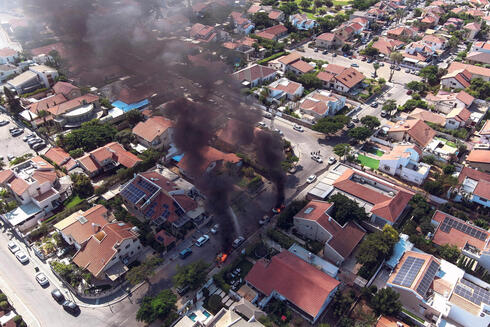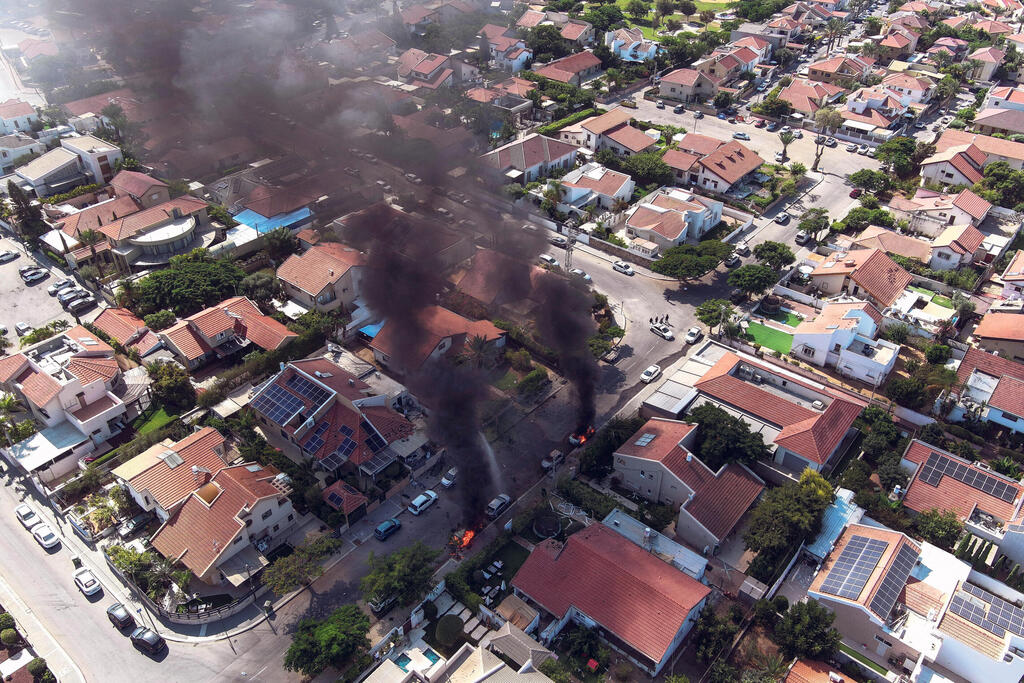
ISRAEL AT WAR
Moody's upcoming assessment of Israel's economy thrown into turmoil with outbreak of war
Ahead of Moody's meeting this week to determine Israel's credit rating, it is still difficult to estimate the damage caused by the war, but it is clear that it will worsen the economic situation
Moody's credit rating agency will convene in less than a week to determine Israel's credit rating. They need to decide whether to downgrade the credit rating - a possibility which wasn’t on the table until this weekend. Ultimately, they need to decide if the state of the Israeli economy has reached a critical level, requiring an update regarding the risk level of Israel's economy. S&P economists had planned to come to Israel in a week and a half to begin their assessment, but it now seems unlikely that they will do so following the outbreak of war with Hamas.
As we have mentioned many times in recent months, Israel's economic risk profile has deteriorated significantly since Netanyahu’s return to power last year. This is not simply due to the political turmoil and instability caused by his government’s plans to overhaul the judiciary, despite enormous civil and institutional opposition, but, has been emphasized by economists, rating agencies, international organizations, and the media – but the geopolitical risk has also increased. The major problem and challenge in risk management is that risks do not move linearly - they can reach a point from which they "jump."
The second problem is that risks are interconnected; they always come together, and it is never clear which of them will trigger the crisis. It is possible that yesterday we found a solution to one mystery, and the geopolitical risk that will determine the rating, along with the inability of this government - the most right-wing government in Israel’s history - to anticipate a tragedy of this magnitude. In the coming days, we need to closely monitor the basic economic indicators, such as the exchange rate (including the dollar exchange rate), stock market indices, and government bond prices. It's a bit too early to assess the long-term implications, but reality doesn’t wait for the rating agencies.
Impossible to know the damage
Like every conflict with Hamas in Gaza, it is impossible to calculate the damage to Israel's economy until one critical piece of information is known: the duration of the conflict. However, this time, there are unprecedented challenges, unlike those in previous operations against Hamas.
Firstly, the tourism and events industries will be affected. Regarding tourism, one can calculate how much each tourist contributes to the Israeli economy and multiply it by the number of tourists. We can also roughly estimate the damage to the industrial sector, as about 18% of industrial output in Israel comes from the Ashkelon region, and if we add the Be'er Sheva region, it accounts for about 25%.
Even though this is a significant amount, a recent economic study by the Bank of Israel concluded that the industrial sector is less sensitive to these events, and that the high-tech sector - which is the main engine of the economy - is least sensitive to them.
We are already familiar with these numbers and, most importantly, with the Bank of Israel's research on this matter. The Second Lebanon War in 2006 resulted in a 0.35-0.5% loss in GDP - a loss totaling a few billion shekels today.
The conclusion from all these studies and subsequent assessments by economic entities is that the economy recovered quickly. There were temporary declines in GDP when the conflicts began (which was always relatively short), but they were followed by significant increases in economic activity that compensated for the loss. GDP is a good sign for other relevant parameters during the challenging early days of war, such as exchange rates, stock indices, and government bonds. This is a known pattern of wartime that we are all familiar with.
Budgetary issues that caused a lot of noise, buzz, and especially headlines in the early days, including around the defense budget, were later clarified with less drama and specific ministries' efforts to improve their positions in negotiations with the treasury. The classic example is the Ministry of Defense, which tends to increase budget demands after war. In the end, there were no dramatic deviations, certainly not due to those "rounds." It is already clear that this time, the healthcare system will also require additional budget allocations, as it has already overwhelmed the hospital system in the south, sending non-urgent patients home, effectively turning into a massive field hospital spread across several centers.
However, this war is very different, more reminiscent of the Yom Kippur War - because of the surprise attack, the number of casualties, and, most importantly, due to the clear systemic breakdown. Therefore, our knowledge based on previous wars against Hamas and other terrorist organizations is less relevant to this case. This means that the damage will be more severe.
First and foremost, we do not know the true extent of the damage in the south and how long it will take for residents to return to normalcy. The reports are nothing short of alarming. "Prolonged security events have much more negative economic potential than shorter events. The negative potential depends on the duration of the event, the extent of damage to the home front, the number of fronts, and the global response to Israel's retaliation," explained Dr. Gil Bufman, Chief Economist of Bank Leumi, who worked at the Bank of Israel and the Ministry of Finance during the Second Lebanon War.
A well-timed attack
From a macroeconomic perspective, this latest war has threatened the Israeli economy and society in a way not seen since the Yom Kippur War in 1973, and it is possible that Israel’s enemies have recognized this. Israel's business cycle is changing these days from a period of prosperity to a period of stagnation. Whereas the Israeli economy grew by over 15% in 2022-2021, at an average rate of 7.5% per year, the growth rate is now declining to 3%, and forecasts suggest a downward trend. It is widely believed that the growth we’ve seen in 2023 is essentially the tailend of the very rapid growth we have seen in the past two years and recovery from the COVID-19 pandemic.
Furthermore, an in-depth analysis shows that the main growth drivers of the Israeli economy, including private consumption and investment, have come to a halt. The state’s tax revenues are in a disturbing decline, with the deficit soaring and could possibly end up at double the originally planned rate of 1.8% GDP. This within the context of the irresponsible fiscal policy of the Netanyahu-Smutrich-Haredi government, which is distributing resources as if there were no tomorrow for political needs and electioneering bribes. Additionally, the Consumer Confidence Index published by the Central Bureau of Statistics, an indicator that seeks to gauge the national mood and public optimism, shows a certain decline.
Israel’s political and societal polarization of the past few months has deeply affected the economy, the desire to invest, consume, entertain, and hire workers. The government's judicial overhaul is already causing irreversible damage, reflected in the devaluation of the exchange rate (3.87 shekels to the dollar on the eve of the war). According to the Bank of Israel, about 10% of this change is due to the domestic political turmoil.
Additional economic consequences of the judicial overhaul include levels of inflation and capital flight from Israel not seen in decades. In this context, the timing of this war does not bode well: a sudden jump in yields of U.S. bonds leads to an increase in the cost of money, with a sharp appreciation of the dollar worldwide, including in Israel. It will not only be more difficult to raise funds for Israel in these turbulent times, but it will also be much more expensive.














